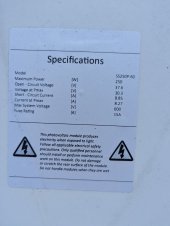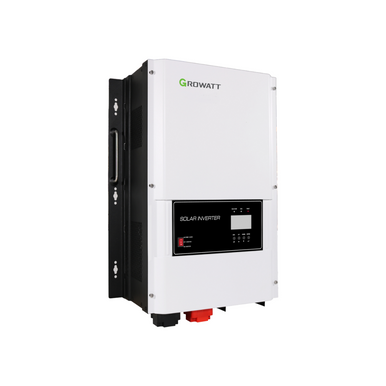Traviss224
New Member
- Joined
- Jun 25, 2022
- Messages
- 329
Couple questions:
1. Should I put my combiner box on the roof with my panels or should it be in the shed with controller/ batteries? I'm assuming with the panels.
2. From my panels to my shed will be 25-30 foot of run. What wire size do I need?
3. From shed to my service hookup at the house will be about 10 feet. What size of wire do I need going there?
I'm running a growatt 6kw split phase system. I believe it needs a 50amp double pole breaker. Here are my solar panels. I'm running 6 in series, 3 rows in parallel. I think it's wrote at 6s3p. Please correct me if I'm wrong.
Thanks for the help


1. Should I put my combiner box on the roof with my panels or should it be in the shed with controller/ batteries? I'm assuming with the panels.
2. From my panels to my shed will be 25-30 foot of run. What wire size do I need?
3. From shed to my service hookup at the house will be about 10 feet. What size of wire do I need going there?
I'm running a growatt 6kw split phase system. I believe it needs a 50amp double pole breaker. Here are my solar panels. I'm running 6 in series, 3 rows in parallel. I think it's wrote at 6s3p. Please correct me if I'm wrong.
Thanks for the help







